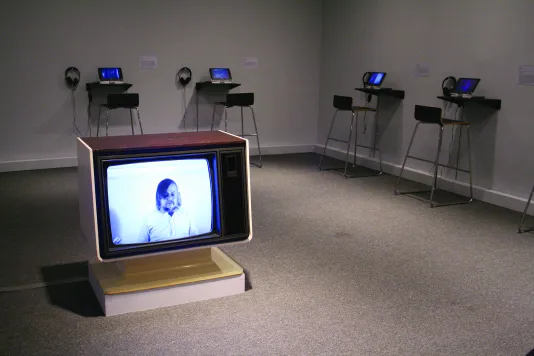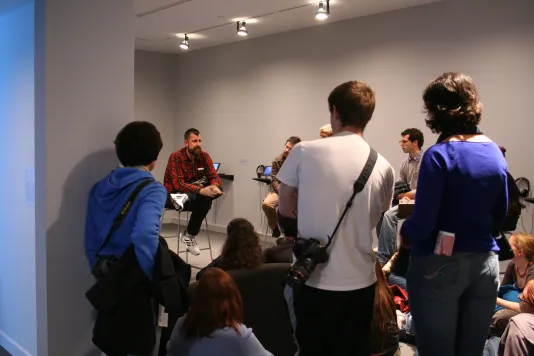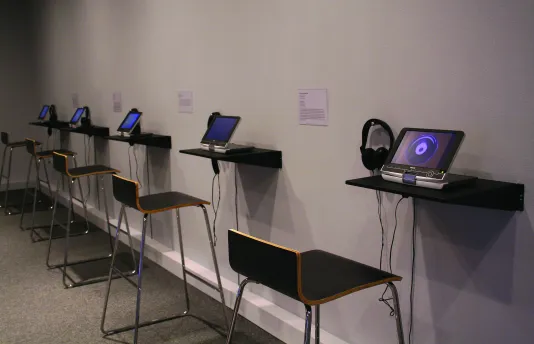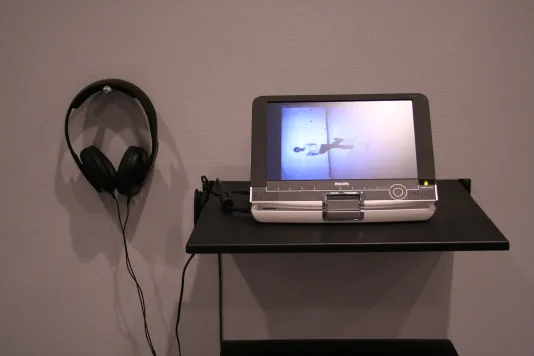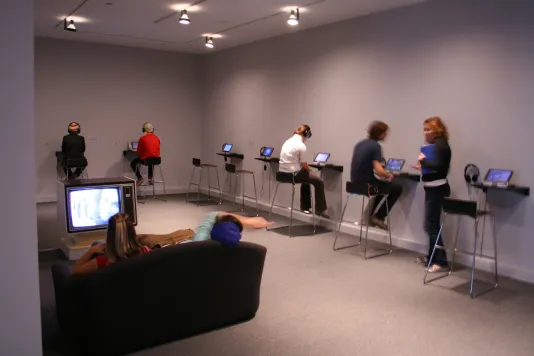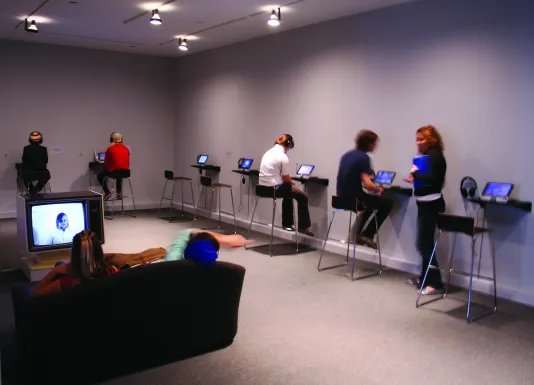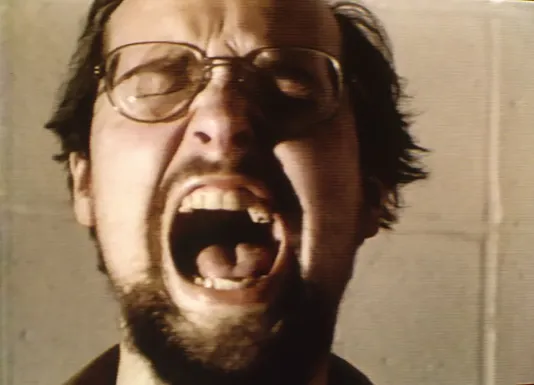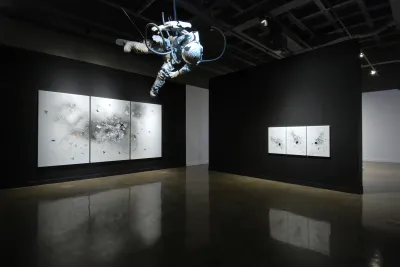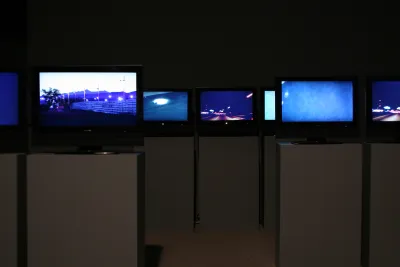Installation View, Video Trajectories Redux, MIT List Visual Arts Center, 2007. Archival Slide
Video Trajectories (Redux): Selections from the MIT List Visual Arts Center New Media Collection Bill Viola: The Space Between the Teeth, 1976
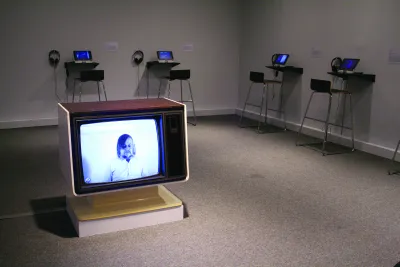
Bill Viola came to video from his experience touring with avant-garde composer and performer David Tudor, bringing an acute sensibility of audiotape manipulation to early video art.
Some early video works involved slowing vocal frequencies to barely audible drones, amplifying dripping water to the boom of a kettledrum, or otherwise enlisting sound in deeply unsettling ways. In this tape however, sound is presented at its most primitive, as the camera lunges in to capture the artist’s full-throated scream. The video, which was part of a group called “Four Songs,” in fact refuses music, words, or narrative (the conventional components of a “song”), as if to suggest that video-and emotion-should be able to communicate at a more basic level.
Video Trajectories, an exhibition presented in the MIT List Center’s Bakalar Gallery, was organized by MIT Professor Caroline A. Jones (October 12-December 30, 2007). Selections from these works—considered masterworks from video art history—are being presented to a broader public on The Media Test Wall. Bill Viola’s The Space Between the Teeth, 1976, is the third presentation in a five-part exhibition series. Video Trajectories (Redux) will continue with Nam June Paik, Video Synthesizer and “TV Cello” Collectibles, 1965-71 (January 5-January 30); and Gary Hill, Soundings, 1979, (February 2-March 6).
Video is used as a medium by different kinds of artists. All the video artworks in this series were made by artists coming out of theater or dance communities, Conceptual art, Minimalism, performance art, sculpture, sound engineering, and avant-garde music. Some focused on the strange new medium of video itself. Like audiotape, videotape could be recorded, played back, and re-recorded almost instantly. Like photography and film, it faithfully (if electronically) represented anything put in front of it. But unlike film, there was nothing to “see” on the tape itself—it was dependent on the electronic apparatus to be scanned and seen. Moreover, video art was born in the context of a fully commercialized mass medium—television.
Particularly in the U.S., early video artists crafted their tapes with a strongly dialectical eye on “the boob tube.” Above all, artists of the 1970s wanted television viewers to wake up to the media world in which they were already living, and to develop an active rather than passive relationship to the medium. Artists working with early video technology attempted to intervene in the intimate psychological relationship that could develop between the average person and his or her television set. Later in the 1980s, home video systems gave every family of means the ability to “be on T.V.” but by the 1990s the intimate phase of video art’s history was over. Video became increasingly spectacular and it has evolved into present day technologies that allow the projection of high-resolution signals onto a screen, a wall, or the vaulted ceiling of a Renaissance church. Video Trajectories stays with pre-spectacular video, allowing earlier phases of the medium’s surprising infancy to come into view.
Excerpted from “Video Trajectories” by Caroline A. Jones, as published in Sounding the Subject/Video Trajectories, Cambridge: MIT List Visual Arts Center, 2007.
About the Artist
Bill Viola (born in New York, New York, 1951) lives and works in Long Beach, California. During the 1970s Bill Viola was technical director of production for Art/Tapes/22 in Florence, Italy (one of the first video art studios in Europe) and a member of David Tudor’s Rainforest Ensemble from 1973-80. Viola creates videotapes, architectural video installations, sound environments, electronic music performances, and works for television broadcast. His installations envelop the viewer in image and sound, employ state-of-the-art technologies, and explore the senses as a means self-knowledge. His works have roots in Eastern and Western art and spiritual traditions. Viola represented the United States at the 46th Biennale di Venezia, Venice, Italy in 1995. In 1997 the Whitney Museum of American Art, New York, New York, organized Bill Viola: A 25-Year Survey. He received a John D. and Catherine T. MacArthur Foundation Fellowship in 1989, and the first Medienkunstpreis in 1993, presented jointly by Zentrum für Kunst und Medientechnologie, Karlsruhe, Germany and Siemens Kulturprogramm, in Germany. He was inducted into the American Academy of Arts and Sciences in 2000 and was awarded Commander of the Order of Arts and Letters by the French Government in 2006.
